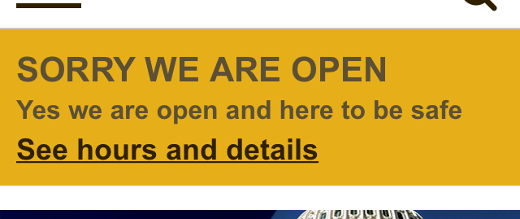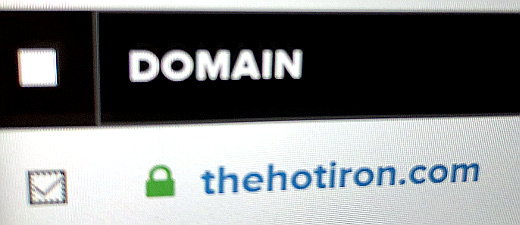Remove LinkedIn Connections Without Them Knowing

Recently I got an alert on LinkedIn that someone viewed my profile. I knew who this person was as they were a connection. Well, I thought they were one, for when I looked at their profile we were no longer connected. My guess was they viewed my profile solely for the purpose to remove the connection between us, and yes, as you may guess there’s a long story here that I will purposely not share.
What this person didn’t realize, and many others do not as well, is that you can remove someone as a connection on the business social networking site without them even knowing it. It is not completely obvious that you can do so, however. As I have known about it for years and maybe even did it once or twice myself, I will share my stealth disconnect secret in the wide open here.
The Steps to Disconnect
Here’s the steps to remove a LinkedIn connection using a standard desktop/laptop Web browser.
1. Navigate to LinkedIn.com, select My Network in the top navigation bar, then under Manage my network click on Connections.

2. Search and scroll, but do not click – the key here is to not open someone’s profile, rather scroll to it in the list of connections. You can try entering a partial name to search, but do not click on their name. If you’re unsure, simply scroll to the bottom of your connections, which may take a while, then use Ctrl-F (on the PC) or Command-F (on the Mac) to find the name of the contact.
For this exercise, I chose my friend and long-time The Hot Iron reader Gary. Don’t worry, I won’t actually disconnect from you!

3. Click the ellipsis (the 3 dots) to the far right of their entry on the list, which will display the option to Remove connection, and click it.

4. You will be presented with a pop-up to confirm to Remove Connection. As the message says, they won’t know that you did. Click Remove to proceed, or Cancel if you don’t want to, as I did.

You will receive a confirmation message when complete, and your connection count will be one less.
To Remove or To Not Remove Connections
This is not the first time I talked about removing LinkedIn connections, as it first came up for me over 8 years ago in this post on how I removed them then. As you may guess, the functional process is much different now. But in re-reading this original post (and adding an editor’s note on its now-outdated content) the reasons for removing connection remain the same, both in what I stated as well as comments to the post. Nothing is forever, as I mentioned in that post, and it certainly holds today. Even the “wise man” who told me is someone I haven’t spoken to in years.
Deconstructing Removing LinkedIn Connections
Removing connections on any social network is a reality. However it’s good to know you have options on how to do it, especially if you don’t want the other person to know you have made a disconnect.This is from The Hot Iron, a journal on business and technology by Mike Maddaloni.
Did you enjoy this? Subscribe to The Hot Iron by RSS/XML feed or Read by Email
Business • Strategize • Technology • (0) Comments • PermalinkConnecting With A Colleague

In today’s remote working environment, often we struggle to connect with people we work with who are also in the same boat. However we soon forget that when we were working in the same office and sitting around the same table with these same people, we still had this problem. I had a challenge like to this once with a teammate that I, as well as others, hadn't really connected with. I decided to make the extra effort to bridge the gap with this person, all to a successful outcome.
At the time I was with an international firm on an international project based in Boston. On the project was a mix of people from the Boston area, around the US and a few from around the world. One in particular was from Australia. When he came into the office, his presence was known. He dressed a little differently from the rest of us had a certain swagger. Not to forget he had a unique accent. None of this really mattered to me, and I introduced myself to him and told him I looked forward to working with him. Despite this initial outreach, I wasn’t really sure he felt the same towards me.
Often this colleague and I were in the same meetings, representing our teams on the project. I learned quickly he didn’t mix words and would speak honestly, though not always the most appropriately, at least by American standards. Often he would mix colloquial terms from Australia into work discussions, causing people to scratch their heads. As a result, many people focused on how he was saying something rather than what he was saying.
I looked at this situation differently. Here was someone who had come from another part of the world and was now stationed in Boston; though Boston is a very international and cosmopolitan, it still harken back to its conservative colonial roots. He came into this ever-expanding group and was trying to make a name for himself.
A Literally Off The Shelf Solution
One day I looked ahead and saw I was scheduled to be in a meeting with him the next. That night I was thinking of how I could finally break the ice with him. As I looked around my home office I found the answer sitting on my bookshelf. The next day I brought it in to work, a book of Australian slang. It was given to me years earlier by another colleague from Australia. It was a rather thick book, the size of large novel. Even though I had held onto it for years, I never thought it would come in handy in this capacity.
As we gathered the next day in a conference room, I sat directly across from my colleague from Down Under. Just as a meeting started, I looked across the table at him and taking the book out, I slammed it on the middle of the table. As did, I said something to the effect that he wasn’t going to get away with using any Australian slang expressions on me any longer.
To this he was a at first taken aback, then he looked straight at me and smiled. From that point forward, we had a much better working relationship, and I got to know him more personally as well. It all happened because I was simply willing to work to make a connection with him.
Deconstructing Connecting with Colleagues
Every situation is different and sometimes we don't always get it right. When it comes to personalities, I feel it's definitely worth trying to connect with people. Many times just from that effort we can gain appreciation and for each other and work well together.
This is from The Hot Iron, a journal on business and technology by Mike Maddaloni.
Did you enjoy this? Subscribe to The Hot Iron by RSS/XML feed or Read by Email
Business • Strategize • (0) Comments • Permalink7 Vital Web Site Updates For The Pandemic

As businesses and individuals return to work, of equal importance to safety and protection is communications – we need to know as much as possible to make informed decisions. One area I have found lacking is with the Web sites of businesses and professionals. Many sites I see in the course of trying to return to normal suffer from a dearth of vital information needed for people to determine if they are still operating or not, and if so how.
Here I offer seven recommendations for your Web site to indicate the status of your business and how to help return to normal as possible these days.
Add alert functionality upfront – If there’s something important you want people to know, put it right up front. How? You can have a brightly colored alert banner anchored to the top of your home or all Web pages to inform people. A browser pop-up can also achieve this. As you may not have this functionality already, you might have to check with your Web site consultant or look into the services of your Web site platform to see how you can gain this. It may be easier than you think, and even if it comes with a cost, it will be well worth it.
Are you open? – This may be obvious to you the business owner, but not all Web sites I visit make it clear. The messaging may be nested into the design of the site but not easily found. Using the alert functionality mentioned above is one way to achieve this. Another is to look at all of the content of your site and make whatever adjustments needed to indicate so.
Update location, hours and contacts – Due to changes in your business, have you relocated? Did you change your hours? Do you have different contact information? Is this new information reflected on your Web site? If not, it should be.
Changes to your business practices – If the experience your customers will have with you has changed as a result of COVID-19, indicate this on your Web site. Will someone have to wear a mask? Do you have shielding in place? Is distancing required? This is important for people to understand if they can still do business with you and will give them the peace of mind they may need that it's safe to do business with you.
Add social media feeds to your site – Many businesses and individuals are updating their social media accounts more than their Web site. Why not kill two birds with one stone and put the feeds from your social media accounts onto your home page? How to do this varies depending on your site and you should follow the previous tips on checking your Web site provider or consultant.
Start an email list – Many businesses found out the hard way when they had to shut down that the only contact with their customers was when they came through their door. As my good friend John Wall says on his Marketing Over Coffee podcast, you've got to have a house list. Every business, every professional should have an email list with the sign up on the Web. There are many different services where you can set up a mailing list, some are even free. For example, if you are reading this by email, I use MailChimp in order to create and send the emails from my RSS feed. You can customize templates and the content to send to your customers and contacts.
Add e-commerce – There's no time like the present to take online payments or sell products and services online. Just last week, Chipotle just started doing this by selling clothing and other items online. Now the company that was all about selling burritos and bowls is now into merchandising. If you don't have a specific new product idea, simply having the ability to take credit cards is important. It can be as simple as setting up a PayPal account and pay by the transaction by transaction, then upgrade to a credit card service when you get more volume.
Deconstructing vital Web site updates
As social media and other services have evolved, much business content and functionality, even e-commerce, uses them. Your Web site may have been neglected or completely out of sync with other messaging you have out there. As Coronavirus remains out there, I recommend these vital Web site updates to ensure it remains an integral part of your business.
This is from The Hot Iron, a journal on business and technology by Mike Maddaloni.
Did you enjoy this? Subscribe to The Hot Iron by RSS/XML feed or Read by Email
Business • Strategize • Web Design • (2) Comments • Permalink5 Ways I Wish Business Was More Like Sports

With professional baseball finally – well, at least as of this writing – starting to come back this year, I have been thinking more about it and other sports, especially how teams and the league are structured. In keeping with the mission here at The Hot Iron, my mind has been pondering how the business world could benefit from being more like professional sports.
Now before you the fair reader says, “hey, pro sports ARE businesses” let me elaborate. First, I concur, as you can’t have teams worth multi-billions and players making multi-millions and not be a business. Where I think they can be more alike, it’s certain aspects unique to sports that would be welcome and refreshing complements to the business world.
And now, ladies and gentlemen, here’s the starting line-up for my 5 ways I wish business was more like sports.
Minor leagues – When you get a job with a company, you are working right away. Some firms may have a training program, and many have a probationary period, but those are in place to get you up to speed and to fire you if need be, respectively. If you are new entering the workforce, say from school or perhaps not, or if you are switching careers, having a minor league system would be a great way to develop your skills and abilities, all the while actually producing.
By being in a minor league system in business, it’d be known that it is still the minors, and expectations would be somewhat different. Such differences could be in your pay and the cost of your services. When you are ready to perform at the top level, you would join the majors. If you never achieved that level, you could stay in the minors or maybe switch careers. In either case the minor leagues of business can be a place to develop the best and brightest people.
Free agency – Talk about the ultimate transparency, as everybody knows what an athlete makes and what the terms of their contracts are. What if that was the same in business, where it is completely the opposite and as non-transparent as one can imagine.
What you are worth to the marketplace would be well-known, and if your current employer couldn’t offer it to you, you could easily go elsewhere, being a free agent. Sure, being a contractor in today’s business environment is a close approximation, but the knowledge of who’s out there and available in any profession or discipline would not be as much of a mystery as it is now.
Working 162 days a year – That’s the number of games in a traditional Major League Baseball season, and other sports have fewer. When you are only working those days, it doesn’t mean you are idle the remainder of the year. When not in a game you are training, relaxing, recovering, getting physical therapy or even meditating.
What if the business work schedule allowed for you to have designated working days and designated training days, days in the middle of the week, and not just at night or the weekends? This way you can prepare better for your work time, ideally correlating to you being more productive and efficient.
No stigma to getting fired – When you get fired in business, it is a bad situation. How many people go around saying, “hey, I got fired?!” There are many reasons why people are fired, including lack of management oversight, new leaders or a change in direction in a company or group. Many times, it is simply personality conflicts. Or simply they could have made mistakes worthy of their termination. Getting fired doesn’t mean you don’t have the skills to do your job. That being said, you are not going to go out looking for a new job saying you were fired from your last one.
In sports, it’s the opposite. Players are getting cut all the time, and many times their unemployment is short as another team signs them. Coaches are getting fired all of the time, only to emerge wearing another team jacket the next season. In all cases it was well-known that the coaches or players were fired, yet nobody is shouting at them during a game because of what they did for their last team. Both players and coaches can perform poorly one season and thrive and win the very next one for a variety of reasons, such as the organization they go to has a much different culture or “system” which works better for them.
Spring Training – In business, an annual kickoff for the new year could be a weekend away for some senior leaders, but for the majority it is a meeting or, these days, a Webinar. What if business had a true spring training, as baseball does, where you get out of the normal office, get some training and bond with your co-workers, and plan and prepare for the upcoming calendar or fiscal year?
Deconstructing Business Being More Like Sports
The way sports have traditionally operated lends to the structure and elements as I have outlined here. As sports have evolved, players and coaches are “working” year round, just as a standard business does. I present here how I have imagined how business can leverage some of these elements from sports, and feel it could transform how businesses function and perform. Isn’t it worth a try to change business as usual?
This is from The Hot Iron, a journal on business and technology by Mike Maddaloni.
Did you enjoy this? Subscribe to The Hot Iron by RSS/XML feed or Read by Email
Business • Strategize • (2) Comments • PermalinkUpdate Your Domain Name Contact Information

Where I’d like this simply to be friendly advice, I present it as a warning – update the contact and payment information for your domain names as soon as possible or you could risk losing your Web site and email.
Keep It All Current
It’s a challenge to manage all of the online accounts we have, both personally and for business as well. Often an account can “linger” out there without any problem, such as a frequent flyer account, if you don’t have your most current mailing address on file with the airline. However, a domain name registrar account doesn’t fall under this category. Why? You never know when you will need to make a change to or renew your domain names, and if you need to do so right away, you may be prevented from doing so.
Even if you have private registration on your domain name account, your contact information needs to be current. For those not familiar, private registration is when someone looks up the registration of your domain name, instead of seeing your actual name, address and phone numbers, they will see masked information. This is to prevent someone from scraping your contact info for the means of soliciting you, or worse – scamming you.
Keeping it all current means your domain name registration remains active and accessible. This includes your name, address and phone numbers, as well as the billing credit card for renewing your domain name.
Untimely Lockout
If your information isn’t correct, you may lose access to your domain name account and would need to have it reestablished, or worse, your domain name can expire and you can’t renew it in a timely manner.
How does this happen? Many domain name registrars are activating two-factor authentication, or 2FA, without explicit notification to or opt-in by its customers. 2FA is when you get prompted to enter a code that was sent to you by email or text message, or an app like Google Authenticator which generates a code. I have personally experienced this from several registrars, and if the phone number or email on file is no longer accurate, then you can get locked out of your account. Where the registrars say they are doing this to protect their customers, when a Web site and email is down, more damage is done.
If the information is accurate and correct, you won’t run the risk of losing access to your account. If this does happen, you may have to “prove” who you are offline, including sending in a copy of a driver’s license or other forms of ID, or even articles of incorporation for a business.
Remind Yourself Online and Offline
Most domain name registrars will send you reminder emails or texts when it’s close to your domain name expiration date. That is, if they have your correct email address and phone number, and you have enabled these notifications.
A simple way to remind yourself to check your domain account information is to put an alert in your calendar. I recommend setting one sixty days before the domain name is set to expire. That way if the information is not current, you have some time to take care of any process your registrar imposes, and can still renew it before it expires. Setting alerts every 3 months is not a bad idea either, especially if your credit card changes or your home or business address changes, especially in an increased work-from-home environment.
Additionally, information on your domain name should be in your “vital records” file. In the event there is a change in management or leadership in your form or organization, the first thing the successor may not be thinking about is the domain name. That is, unless it expires and the Web site disappears and email stops working. A simple 1-page sheet, sealed in an envelope and clearly marked, listing all domain names and their expiration date, the registrar Web site and contact info and the login and password should be sufficient.
Pro Tip on Extending Your Registrations
Domain names are often renewed annually, however you have the option to extend their registration up to ten years in advance. I recommend this for the primary domain name for your Web site and email, and any other domain names tied to key sites and services. Where it is not completely a “set it and forget it” scenario, you do gain some peace of mind in not having to renew it annually.
Deconstructing Domain Name Registrations
Everyday your Web sites and email become increasing vital to yourself and your firm or organization. Maintaining their domain names is equally as vital to ensure those services are accessible. This maintenance is not laborious or even time consuming; it simply has to be done. Reminding yourself and others key people will ensure there is awareness and coverage for this important task.
This is from The Hot Iron, a journal on business and technology by Mike Maddaloni.
Did you enjoy this? Subscribe to The Hot Iron by RSS/XML feed or Read by Email
Business • Domain Names • Technology • (2) Comments • Permalink
